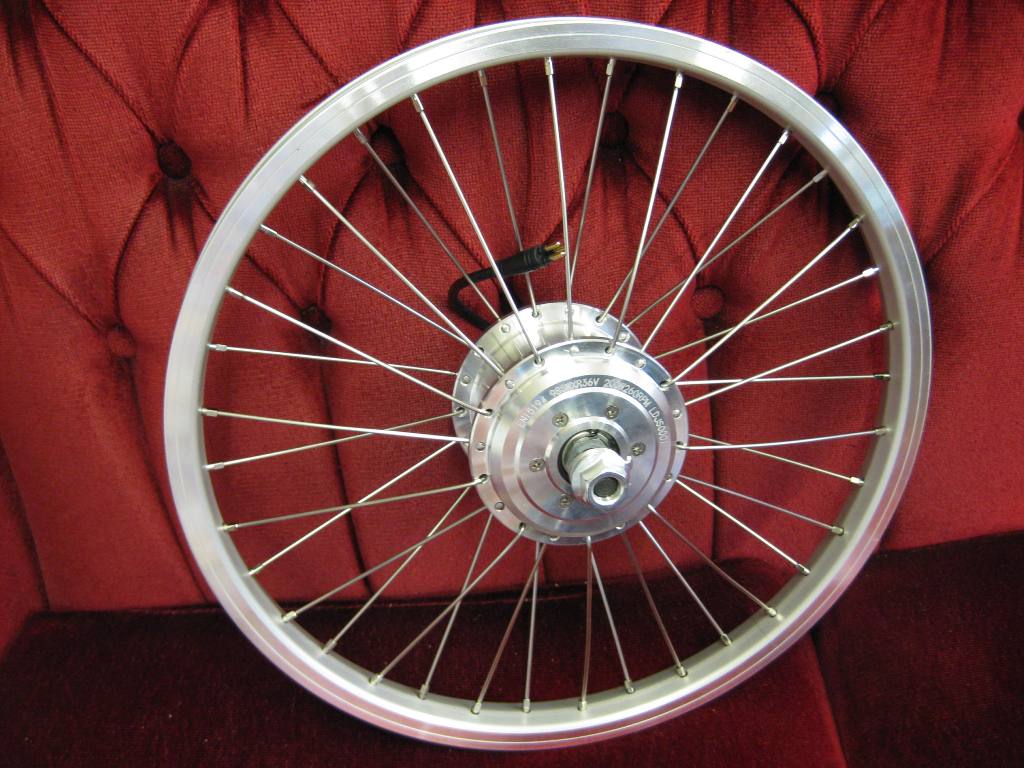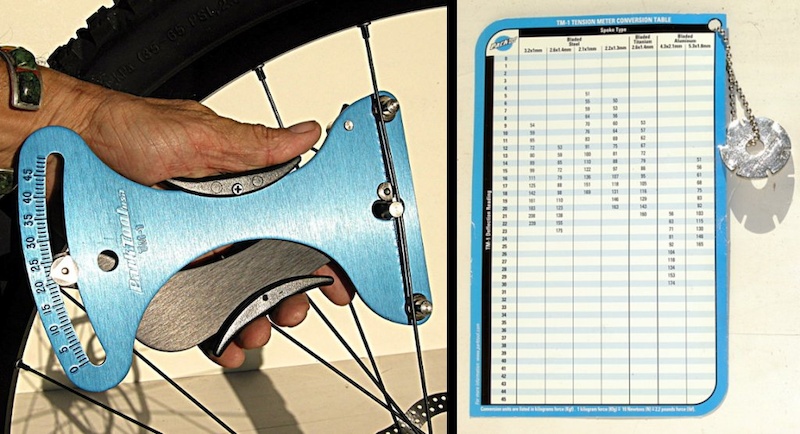There was heavy rain this morning, so I postponed my bike ride until afternoon. So instead, I went in the shed and finished my wheel truing stand. Made from recycled materials, it will not win beauty contests, but is accurate where it matters. It even has a sliding bolt in a slot so I can adjust the width for different spindle lengths.
Instead of stripping the wheel down after getting the valve hole in the wrong place, I trued and tensioned the wheel. It is accurate in radius to within a mm, and true within 2 to 3 mm, as judged by eye. If this was a wheel for one of my own bikes, I would be happy with that. I think that if you fit a tyre, there will be variations in the tyre fitting that would be within 1 or 2 mm, so we have to work within practical limits.
Thoughts on spoke tension. With a perfect rim spokes and hub, it would be possible to have a perfectly true wheel with all the spokes at the same tension. Here in the real world, I don`t believe that is possible. Take a new rim, just how round and true is it? Does the metal have uniform hardness and tensile strength all the way round? I say there will be variations. Therefore, to hold that rim straight and true, some spokes will need more tension than others.
What I noticed about trying to asses spoke tension by musical pitch. On the wheel I have just built, every spoke crosses and touches another spoke about a third of the way along its length. If you twang the outer two thirds of the spoke, you get a sort of semi musical note. But the spoke that touches it, does not push against it hard enough to act like the bridge of a guitar, so the resultant note is damped. I can tune a guitar by ear, but this is much harder. Also for the reasons given in the last paragraph, I do not think uniform spoke tension is necessarily possible. With used components that I have, I can either have a wheel that has uniform spoke tension, or a true wheel.
Incidentally, If we want uniform spoke tension, why are spokes not tightened with a miniature torque wrench. After all, that is how we achieve uniform tension in cylinder head bolts.
I refinement I may add to my truing stand. An arrangement so that I have a piece of spring steel like a feeler gauge that I can adjust to touch the side of the rim. The advantage would be, it would touch the out-of-true point as the wheel is turned, but it would not stop the wheel. With my poor eyesight, it would be easier to hear it touch the rim, than to see it.
These are some of my random thoughts at this stage. All comments welcome. " The perfect is the enemy of the good" [Sheldon Brown]








